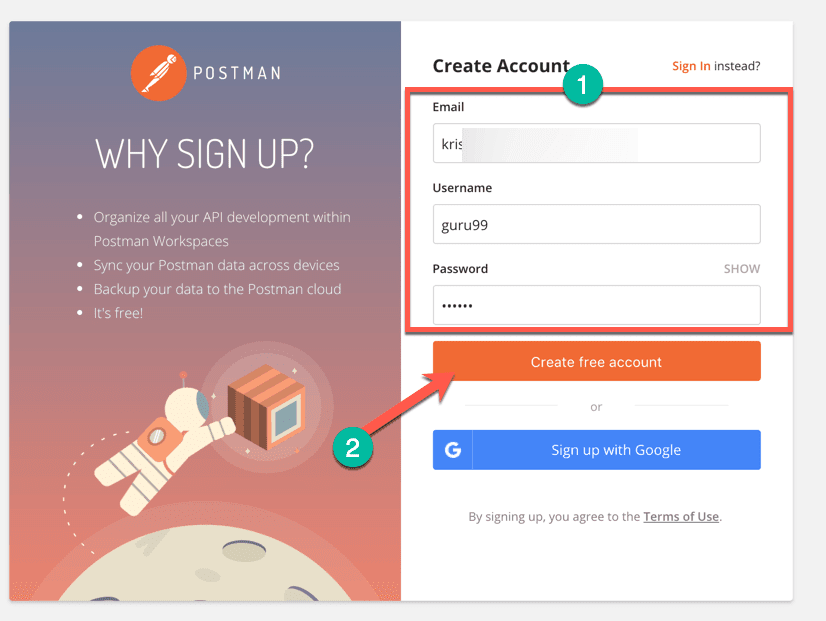

- #GOOGLE CHROME POSTMAN DOWNLOAD UPDATE#
- #GOOGLE CHROME POSTMAN DOWNLOAD CODE#
- #GOOGLE CHROME POSTMAN DOWNLOAD PASSWORD#
Download the attachments and leverage POSTMAN to get familiar with them. Infoblox WAPIs are simple and easy to use with any REST client.
#GOOGLE CHROME POSTMAN DOWNLOAD CODE#
Click on the Code option to generate a code snippet for the WAPI call in any language of your choice. You will see a response in the Body section. To try out any of the WAPI calls in the collection. turn the SSL certificate verification off. click on the Settings icon on the top right corner. In order to turn off the blocking of the self-signed SSL certificates,. You can verify the values by clicking on the eye-shaped icon next to the environment. #GOOGLE CHROME POSTMAN DOWNLOAD UPDATE#
Click on the Update option and close the window. The object_reference variable only needs to be updated when a WAPI call has it mentioned. Fill in the grid master IP address and Base64_encoding details. Click into the Infoblox WAPI environment variables. In order to do so, click on the Gear icon next to the environment box. Populate it with values specific to your environment. Google Chrome is a very popular, yet closed source web browser. Before getting started, select the Infoblox WAPI environment variables from the drop-down box on the right side of the window. Download the latest Postman updated chrome-extension file. Open Google Chrome and enter in the URL bar: chrome://indexeddb-internals. The Collections tab now contains the list of sample WAPI calls that you can try out. In the History left panel, select Clear all to delete all data before reimporting backup data. Once uploaded, you will see the following messages. Upload the two files in the pop-up window. To import these files into your environment, click on Import on the menu. To try out the WAPI calls, download, unzip and import the two files into your application. (Example:- record:host/ZG5zLmhvc3QkLl9kZWZhdWx0LmNvbS5pbmZvLnByaW50ZXI: /default) Substitute this variable with the reference of the object you want to work with. #GOOGLE CHROME POSTMAN DOWNLOAD PASSWORD#
The username and the password are combined with a colonĮvery WAPI Object is referenced by a unique Object Reference that is used to identify the object for all the operations.The credentials are constructed like this: Here, we use the “Basic” authentication scheme. The HTTP Authorization request header contains the credentials to authenticate a user agent with a server. This is the IP address of your grid master. The first file is a collection of a sample set of WAPI calls, and the other is a file with environment variables (see the table below) that are used within the collection. There are two files zipped into an attachment included with the blog. You can download the app from here or add it as an extension to Google Chrome. POSTMAN is a powerful HTTP client with cookie management, environment variables, and code generation that makes it easy to test, develop and document APIs. To get you started quickly, we have attached a POSTMAN collection of the RESTful Infoblox APIs. This blog gives you an insight on why to use these WAPIs.

Infoblox offers a rich set of Web-based Application Programming Interfaces, also called WAPIs, that allow you to easily integrate NIOS into your automation environment.






 0 kommentar(er)
0 kommentar(er)
